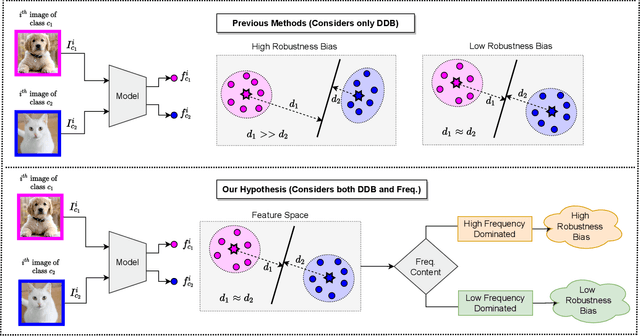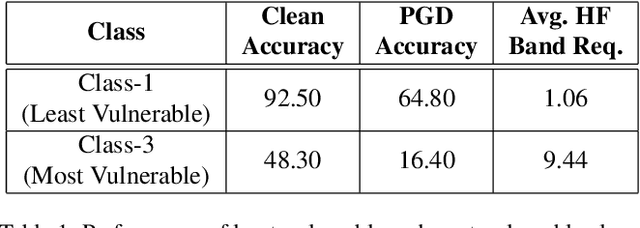Holistic Approach to Measure Sample-level Adversarial Vulnerability and its Utility in Building Trustworthy Systems
Paper and Code
May 05, 2022



Adversarial attack perturbs an image with an imperceptible noise, leading to incorrect model prediction. Recently, a few works showed inherent bias associated with such attack (robustness bias), where certain subgroups in a dataset (e.g. based on class, gender, etc.) are less robust than others. This bias not only persists even after adversarial training, but often results in severe performance discrepancies across these subgroups. Existing works characterize the subgroup's robustness bias by only checking individual sample's proximity to the decision boundary. In this work, we argue that this measure alone is not sufficient and validate our argument via extensive experimental analysis. It has been observed that adversarial attacks often corrupt the high-frequency components of the input image. We, therefore, propose a holistic approach for quantifying adversarial vulnerability of a sample by combining these different perspectives, i.e., degree of model's reliance on high-frequency features and the (conventional) sample-distance to the decision boundary. We demonstrate that by reliably estimating adversarial vulnerability at the sample level using the proposed holistic metric, it is possible to develop a trustworthy system where humans can be alerted about the incoming samples that are highly likely to be misclassified at test time. This is achieved with better precision when our holistic metric is used over individual measures. To further corroborate the utility of the proposed holistic approach, we perform knowledge distillation in a limited-sample setting. We observe that the student network trained with the subset of samples selected using our combined metric performs better than both the competing baselines, viz., where samples are selected randomly or based on their distances to the decision boundary.
 Add to Chrome
Add to Chrome Add to Firefox
Add to Firefox Add to Edge
Add to Edge